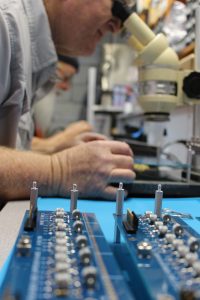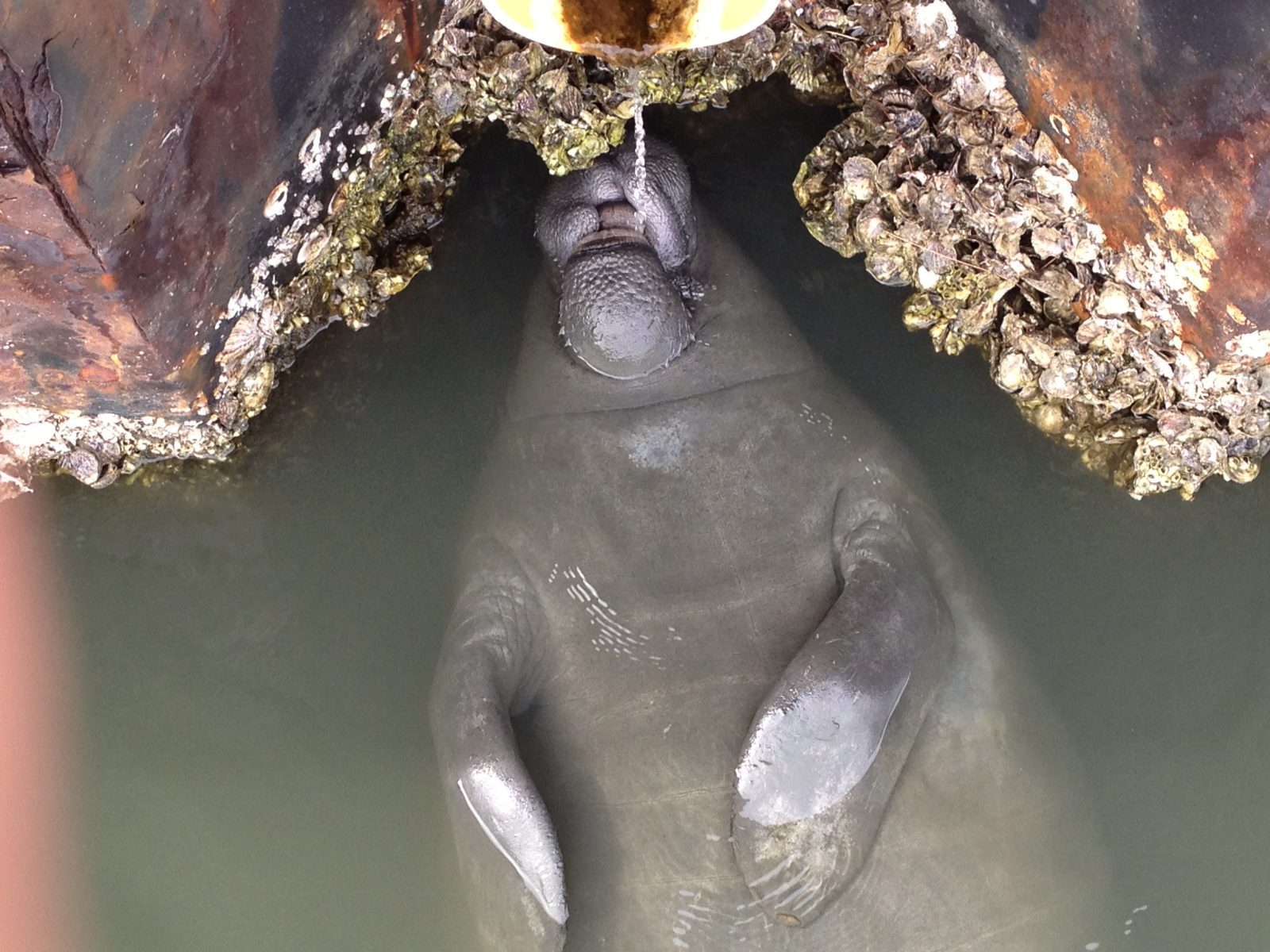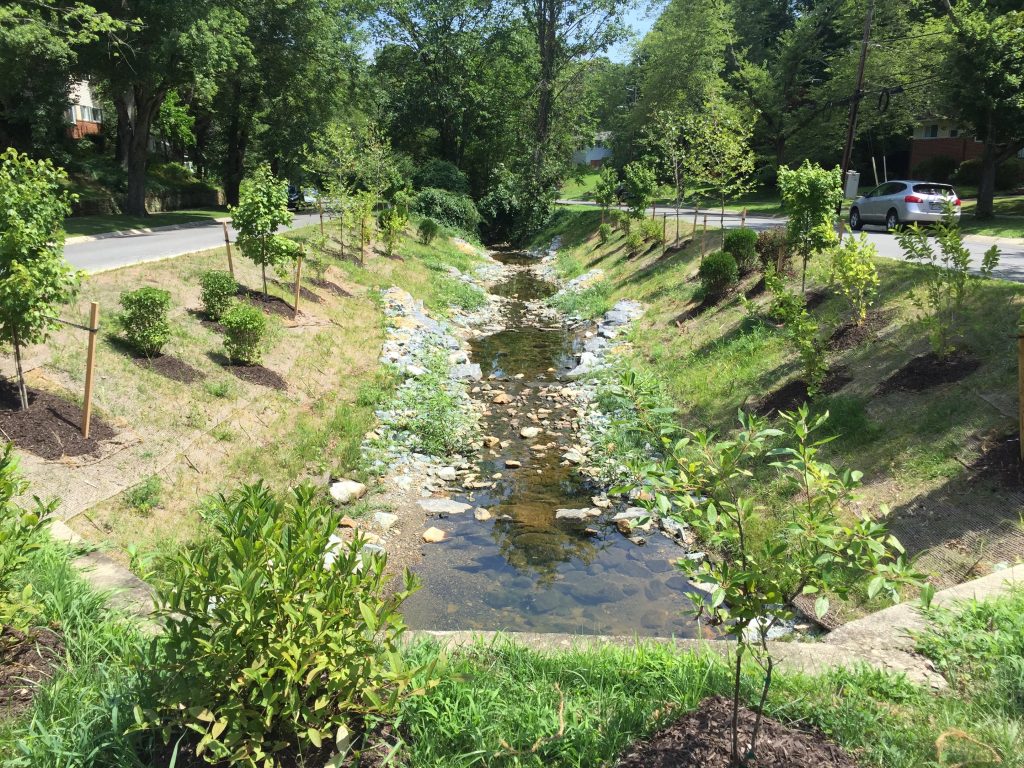UESI Protects Manatees

Manatee Drinking Water
Manatees – Gentle and Massive Marine Mammals
There are three main species of manatees: West Indian, West African, and Amazonian. The manatees that live in Florida’s waterways are West Indian. They can grow up to 13 feet and weigh up to a whopping 1,300 pounds. Despite their size, the massive mammal glides gracefully through the water, typically at an energy-saving speed of three to five miles per hour.
While manatees never leave the water, they need to come to the surface to breathe air, just like all other marine mammals. They must surface every three or four minutes, but a resting manatee can stay underwater for up to 15 minutes. Manatees are sensitive to cold temperatures and cannot survive in waters below 60 degrees. That’s why they migrate from the open waters to Florida’s coastal waters, rivers, and canals during winter months.
Manatees are herbivores, meaning they feed on plants. Lots of plants. They eat up to 15% of their body weight each day.
A Threatened Species
According to the Florida Fish and Wildlife Conservation Commission, “the Florida manatee population has grown to a minimum of 8,350 animals today and as a result, the species was reclassified from an endangered to a threatened species under the federal Endangered Species Act in May 2017.”
Manatees are particularly important to the functioning of marine ecosystems. As keystone species, manatees greatly influence other species, and without them, their ecosystem would be dramatically different or even cease to exist altogether.

US Fish and Wildlife Service Tour of MPS Labs at UESI
Manatees and Humans
Manatees pose no threat to humans, but unfortunately, humans pose a significant threat to them.
Any species of animal living in the wild will suffer losses from natural causes and can usually overcome those losses. But manatees, like many other wild animal populations, must also deal with a high number of additional mortalities from human-related causes.
Throughout the last century, manatee populations have dwindled due to human activities like hunting for their hides, oil, and bones.
Today, even with legal protections, manatees remain at risk. The gentle creatures are often accidentally hit by motorboats in increasingly congested waters, get entangled in fishing nets, or get trapped and crushed in water structures.
The leading cause of manatee deaths is collisions with watercraft, followed by entrapment in flood control structures. Manatees can be crushed in closing floodgates and canal locks that protect against salt water intrusion and flooding. This problem is particularly acute in South Florida, where many water control structures exist. Manatee deaths from drowning have also occurred when the tremendous suction that is created by water rushing through opening gates pins animals under the water.
That is where Underwater Engineering Services, Inc., a GPI subsidiary company in Florida, comes in. UESI is an essential player in protecting this threatened species.
UESI’s Manatee Protection System
The mission of the MPS Team at UESI, led by Larry Taylor, is to design, manufacture, install, and maintain Manatee Protection Sensor Systems for water control structures. These sensor systems detect Manatees at risk of being crushed in flood control and navigation lock gates.
The MPS Team has developed two unique design solutions used by the South Florida Water Management District, the U.S. Army Corps of Engineers, and the Florida Department of Environmental Protection.
- PED – Piezo-Electric-Detection system for vertical lift-gates. The PED sensors are polyurethane “bumpers” that are clamped to the structure floor. They include very sensitive piezoelectric tiles that detect very light contact as manatees swim beneath the closing gate. These sensors ignore the turbulence from the rushing water and safely detect the manatee’s body to stop the gate and reverse the direction to allow the manatee to freely swim through without harm.
- ADS – Acoustic Detection System for navigation lock gates. An array of sound transmitters is attached to one gate, and a matching array of receivers is attached to the opposing gate. When the manatee swims between the closing gates, the sound waves in the water are blocked, and the alarm triggers the gate to stop and reopen.
According to Larry Taylor, UESI’s Manatee Protection System Manager, MPS is a non-contact system that is good for the manatees and also benefits turtles, gators, and other animals swimming through.
Sensor development for the Manatee Protection System is an ongoing effort for Larry Taylor and his team. UESI has a contract to provide replacement sensors and custom electronics to the South Florida Water Management District. Recently, UESI completed the production and testing of eight sensors and their support electronics. UESI is also responsible for maintaining the Acoustic Detection Sensor System (Version 4) for the U.S. Army Corps of Engineers at St. Lucie, Port Mayaca, Julian Keen Jr., Ortona, W.P. Franklin, and Canaveral Locks. UESI conducts regular system inspections, electronic repairs, and dive operations to keep the sensors clean.

Larry Taylor in the MPS Lab
Visiting the Sunshine State?
If you are ever in South Florida, say hello and have a peek at the UESI/MPS laboratory. You may also want to plan a trip to the nearby Manatee Observation and Education Center in Fort Pierce. It is the #1 visited place in Fort Pierce and will soon feature a permanent display of UESI’s Manatee Protection System.
Underwater Engineering Services, Inc. (UESI)
3306 Enterprise Rd, Fort Pierce, FL 34982
Manatee Observation and Education Center
480 N. Indian River Drive, Fort Pierce, FL 34950


